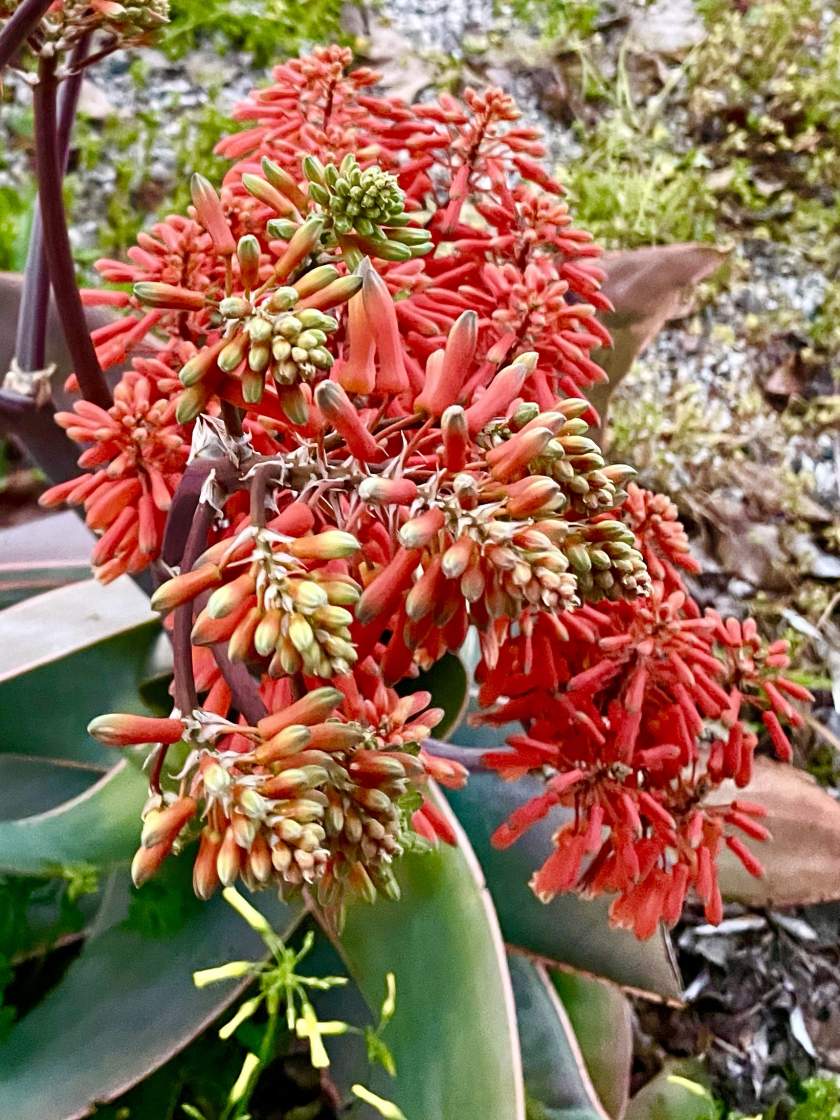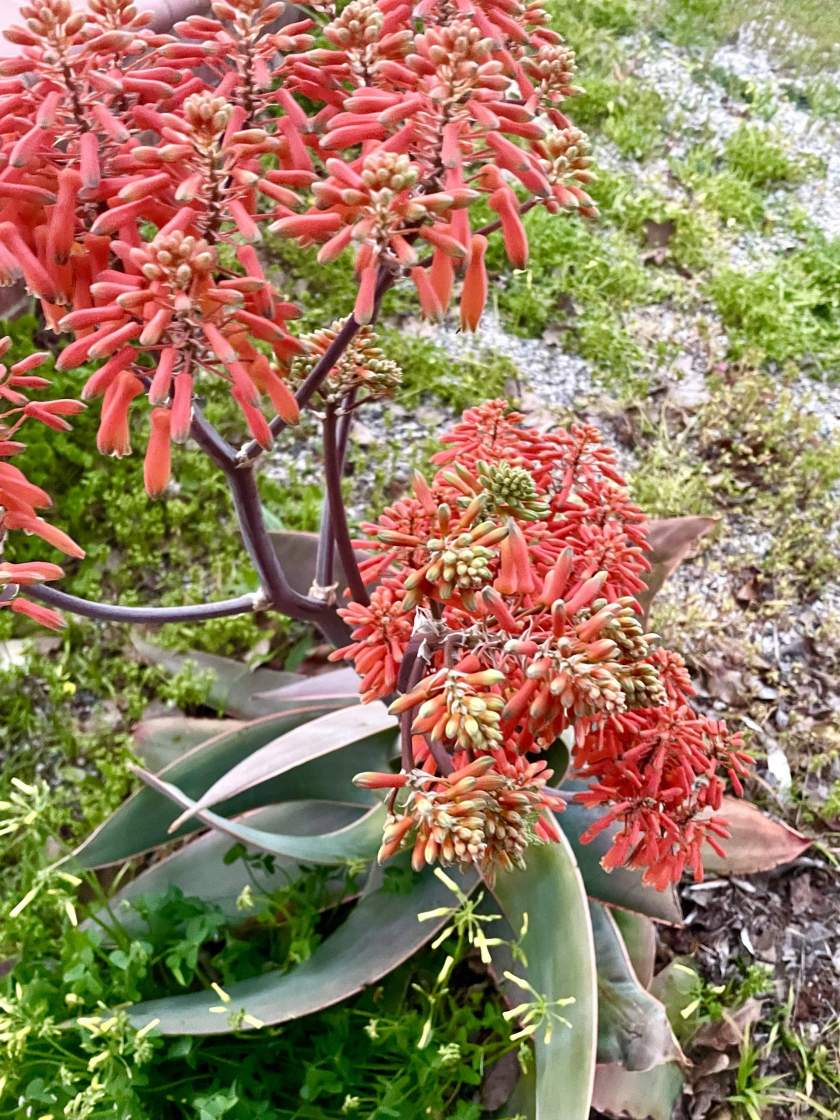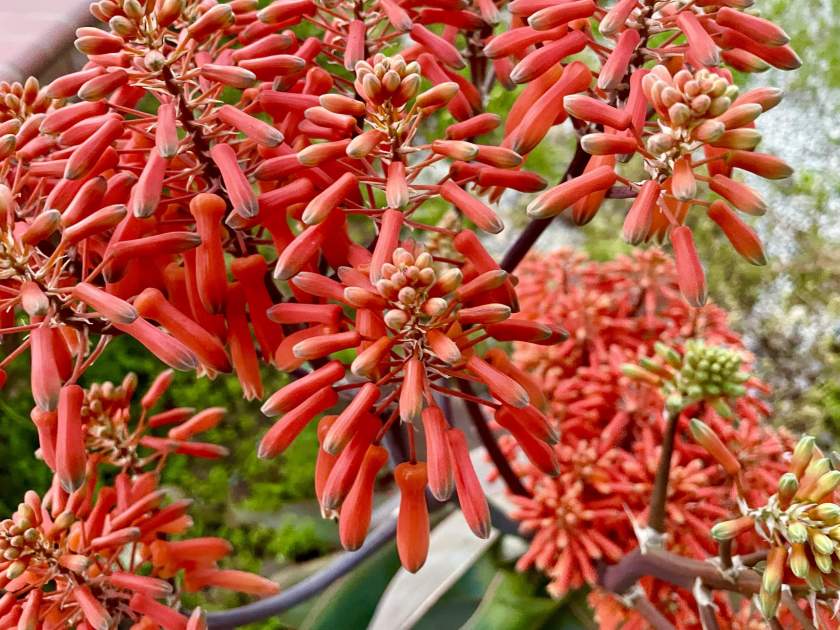Aloe striata, commonly known as Coral Aloe or Coral Aloe Vera, is a species of succulent plant that belongs to the family Asphodelaceae. Native to South Africa, it is widely cultivated for its unique and beautiful appearance. The species name “striata” refers to the distinctive striped patterns found on the leaves.
Aloe striata is a stemless succulent that forms rosettes of thick, fleshy leaves. The leaves are smooth, elongated, and have a slightly concave shape. They are characterized by their striking blue-green color, which can vary depending on the lighting conditions and overall health of the plant. One of the notable features of Aloe striata is the presence of distinct pale or white stripes that run along the length of each leaf, creating an attractive contrast against the background color.
When the plant receives sufficient sunlight, the leaf margins take on a reddish or coral hue, hence the common name “Coral Aloe.” This coloration intensifies during periods of drought or stress, adding to its visual appeal. The leaves are typically devoid of sharp spines or teeth, making Aloe striata a more user-friendly Aloe variety.
In terms of size, Aloe striata typically reaches a height of around 1 to 2 feet (30 to 60 centimeters) and spreads to form clumps. As a slow-growing species, it maintains a relatively compact and manageable size, making it suitable for container cultivation or as a focal point in rock gardens or succulent arrangements.
inflorescence:
Aloe striata produces tall, slender flower spikes that emerge from the center of the rosette. The inflorescence consists of tubular-shaped, coral-colored flowers that appear in clusters. The flowering period typically occurs in late winter or early spring, adding an extra burst of color to the plant. The flowers are attractive to pollinators, such as bees and butterflies, further enhancing their ecological value.

How to grow Aloe striata:
Cultivating Aloe striata requires providing it with a well-draining soil mixture, such as a sandy or gritty substrate, as excessive moisture can lead to root rot. This species prefers a sunny location and can tolerate partial shade. It is relatively drought-tolerant and is adapted to arid conditions, making it suitable for water-wise gardens or regions with limited rainfall. Watering should be done sparingly, allowing the soil to dry out between waterings.
Propagation of Aloe striata can be achieved through offsets or suckers that develop around the base of mature plants. These offsets can be carefully separated and planted in their own containers or in suitable garden locations. Aloe striata is also known to produce seeds, which can be collected and sown for propagation, although this method requires more time and patience.
Pests and Disease:
As a hardy and low-maintenance plant, Aloe striata is generally not prone to significant pest or disease issues. However, like other succulents, it is important to monitor for common succulent pests such as mealybugs or scale insects and take appropriate measures if an infestation occurs.
Overall, Aloe striata is a visually captivating succulent that combines unique leaf patterns, striking coloration, and showy flowers. Its adaptability to various growing conditions, coupled with its relatively easy care requirements, makes it a popular choice among succulent enthusiasts and gardeners looking to introduce an eye-catching element to their indoor or outdoor spaces.





